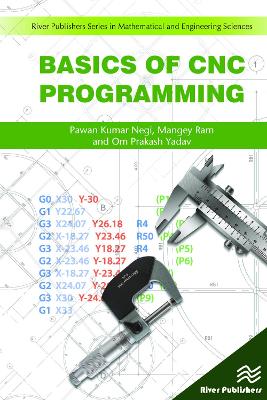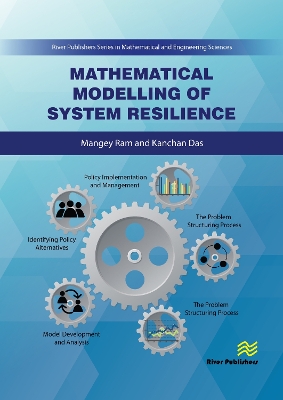River Publishers Series in Mathematical and Engineering Sciences
2 total works
Before the introduction of automatic machines and automation, industrial manufacturing of machines and their parts for the key industries were made though manually operated machines. Due to this, manufacturers could not make complex profiles or shapes with high accuracy. As a result, the production rate tended to be slow, production costs were very high, rejection rates were high and manufacturers often could not complete tasks on time.
Industry was boosted by the introduction of the semi-automatic manufacturing machine, known as the NC machine, which was introduced in the 1950's at the Massachusetts Institute of Technology in the USA. After these NC machine started to be used, typical profiles and complex shapes could get produced more readily, which in turn lead to an improved production rate with higher accuracy.
Thereafter, in the 1970's, an even larger revolutionary change was introduced to manufacturing, namely the use of the CNC machine (Computer Numerical Control). Since then, CNC has become the dominant production method in most manufacturing industries, including automotive, aviation, defence, oil and gas, medical, electronics industry, and the optical industry.
Basics of CNC Programming describes how to design CNC programs, and what cutting parameters are required to make a good manufacturing program. The authors explain about cutting parameters in CNC machines, such as cutting feed, depth of cut, rpm, cutting speed etc., and they also explain the G codes and M codes which are common to CNC. The skill-set of CNC program writing is covered, as well as how to cut material during different operations like straight turning, step turning, taper turning, drilling, chamfering, radius profile, profile turning etc. In so doing, the authors cover the level of CNC programming from basic to industrial format. Drawings and CNC programs to practice on are also included for the reader.
Industry was boosted by the introduction of the semi-automatic manufacturing machine, known as the NC machine, which was introduced in the 1950's at the Massachusetts Institute of Technology in the USA. After these NC machine started to be used, typical profiles and complex shapes could get produced more readily, which in turn lead to an improved production rate with higher accuracy.
Thereafter, in the 1970's, an even larger revolutionary change was introduced to manufacturing, namely the use of the CNC machine (Computer Numerical Control). Since then, CNC has become the dominant production method in most manufacturing industries, including automotive, aviation, defence, oil and gas, medical, electronics industry, and the optical industry.
Basics of CNC Programming describes how to design CNC programs, and what cutting parameters are required to make a good manufacturing program. The authors explain about cutting parameters in CNC machines, such as cutting feed, depth of cut, rpm, cutting speed etc., and they also explain the G codes and M codes which are common to CNC. The skill-set of CNC program writing is covered, as well as how to cut material during different operations like straight turning, step turning, taper turning, drilling, chamfering, radius profile, profile turning etc. In so doing, the authors cover the level of CNC programming from basic to industrial format. Drawings and CNC programs to practice on are also included for the reader.
Almost all the systems in our world, including technical, social, economic, and environmental systems, are becoming interconnected and increasingly complex, and as such they are vulnerable to various risks. Due to this trend, resilience creation is becoming more important to system managers and decision makers, this to ensure sustained performance. In order to be able to ensure an acceptable sustained performance under such interconnectedness and complexity, resilience creation with a system approach is a requirement. Mathematical modeling based approaches are the most common approach for system resilience creation.
Mathematical Modelling of System Resilience covers resilience creation for various system aspects including a functional system of the supply chain, overall supply chain systems; various methodologies for modeling system resilience; satellite-based approach for addressing climate related risks, repair-based approach for sustainable performance of an engineering system, and modeling measures of the reliability for a vertical take-off and landing system. Each of the chapters contributes state of the art research for the relevant resilience related topic covered in the chapter.
Technical topics covered in the book include:
1. Supply chain risk, vulnerability and disruptions
2. System resilience for containing failures and disruptions
3. Resiliency considering frequency and intensities of disasters
4. Resilience performance index
5. Resiliency of electric Traction system
6. Degree of resilience
7. Satellite observation and hydrological risk
8. Latitude of Resilience
9. On-line repair for resilience
10. Reliability design for Vertical Takeoff and landing Prototype
Mathematical Modelling of System Resilience covers resilience creation for various system aspects including a functional system of the supply chain, overall supply chain systems; various methodologies for modeling system resilience; satellite-based approach for addressing climate related risks, repair-based approach for sustainable performance of an engineering system, and modeling measures of the reliability for a vertical take-off and landing system. Each of the chapters contributes state of the art research for the relevant resilience related topic covered in the chapter.
Technical topics covered in the book include:
1. Supply chain risk, vulnerability and disruptions
2. System resilience for containing failures and disruptions
3. Resiliency considering frequency and intensities of disasters
4. Resilience performance index
5. Resiliency of electric Traction system
6. Degree of resilience
7. Satellite observation and hydrological risk
8. Latitude of Resilience
9. On-line repair for resilience
10. Reliability design for Vertical Takeoff and landing Prototype

